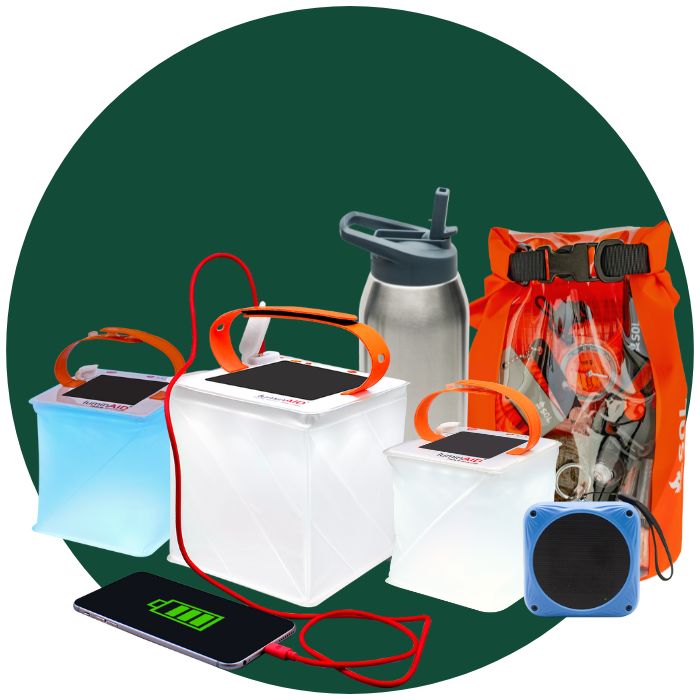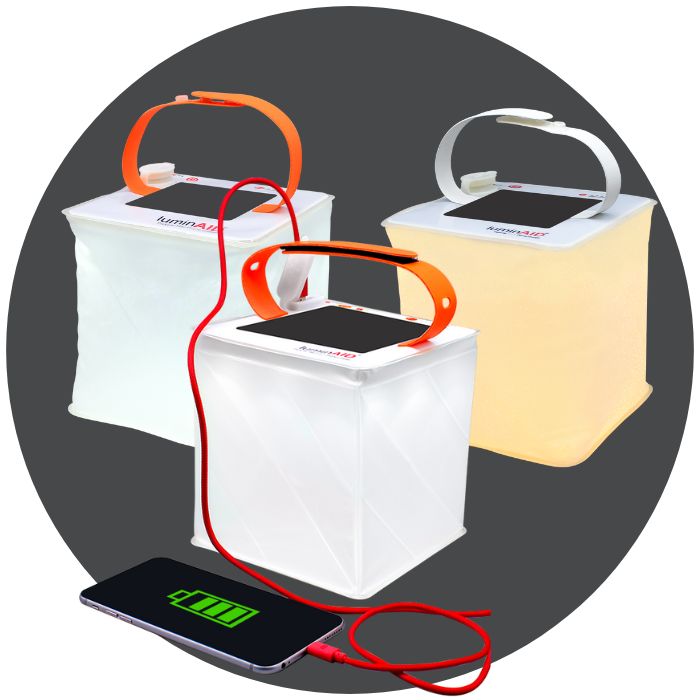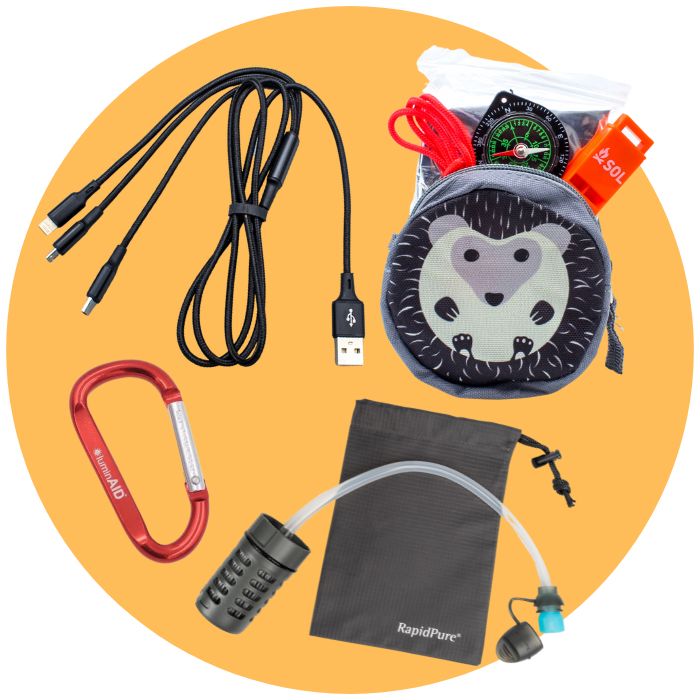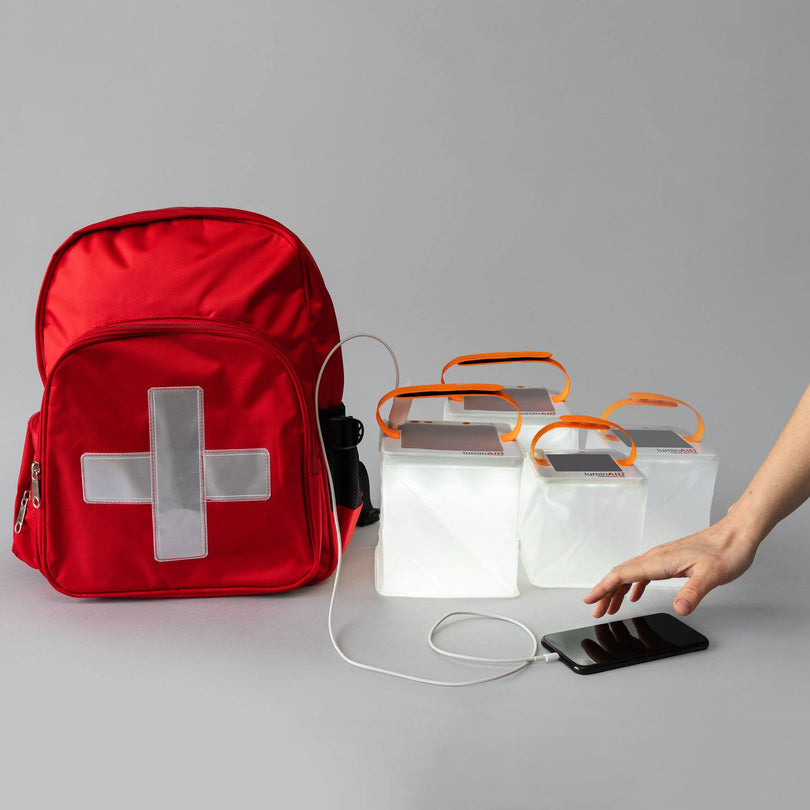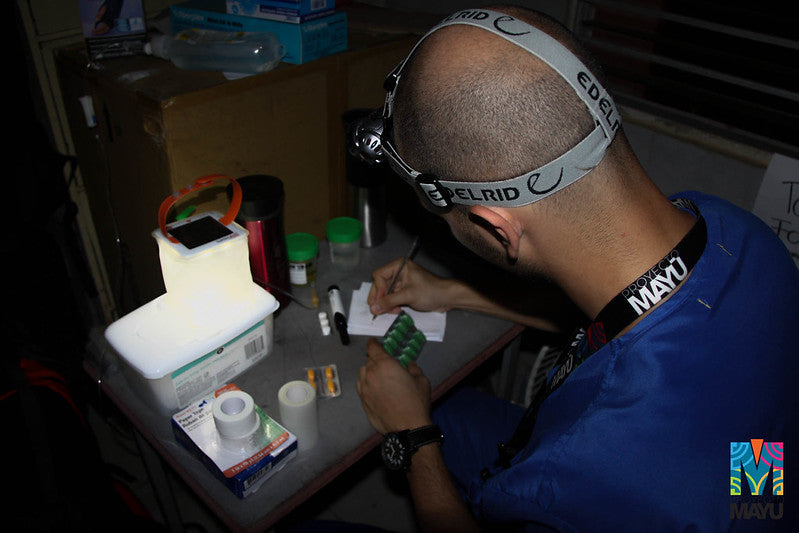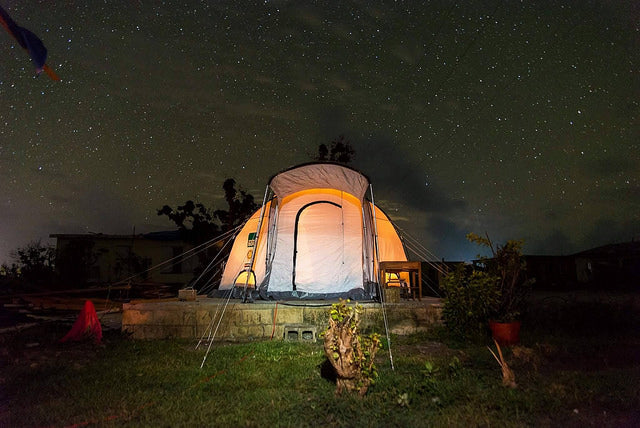Families without access to reliable electricity often suffer health risks just to have access to light. Fuel-based lights popular in homes without electricity put families at a greater risk of burns, respiratory problems, and accidental poisonings. The consequences of these risks can be devastating, particularly for children, who are disproportionately more likely to sustain burns, inhale dangerous indoor fumes, and accidentally ingest poisonous liquids from fuel-based lighting. Solar lights offer a safe and cost-effective alternative, and can help significantly reduce health risks for vulnerable families.

A family who fled the Rohingya crisis in Bangladesh relies on safe solar light
The WHO estimates that 3.8 million people die prematurely each year due to illnesses attributed to poor indoor air quality. A major contributor to pollutants in the home is kerosene lanterns: a popular and accessible lighting alternative for energy poor households. Burning kerosene and other biofuels in closed indoor spaces is linked to respiratory issues, as well as vertigo, memory loss, or even blood and kidney damage. Among these dangers is the release of carbon monoxide, a byproduct of kerosene lanterns if they reach incomplete combustion. Since women tend to spend more time at home in developing communities, they are more likely to face adverse health effects from poor indoor air quality. According to one study, women in Nepal who depended on kerosene lanterns for lighting were nine times more likely to have tuberculosis than those who used electric light. By reducing the amount of dangerous fumes families are exposed to, solar lanterns can have a significant positive effect on their health and well-being.

A family in Peru displaced after landslides avoids fire risk in a temporary shelter
Children and infants also run the risk of poisoning, another major danger of kerosene lantern use. Kerosene lanterns use liquid kerosene fuel, which is often stored indoors for easy access and can be accidentally ingested by children. In fact, accidental kerosene ingestion is one of the most common causes of child poisoning in developing countries. Nearly 80,000 kids each year unintentionally drink kerosene fuel in South Africa alone. One of the central goals of implementing LuminAID solar lanterns is to reduce household dependence on kerosene, improving health in developing communities and potentially saving lives.
Replacing kerosene lanterns and candles with solar lanterns can have a positive impact on health equity in developing countries. Solar lighting helps reduce the health burden on women and children by helping improve overall indoor air quality standards and increasing household safety. LuminAID solar lanterns are also all PVC-free, avoiding any exposure to potentially dangerous chemicals used in the production of some other solar products. With access to safe solar lighting, energy poor families can live healthier lives without having to expose themselves to pollution-related health risks, while protecting their children from burns and poisonings.
Sources
Mills, Evan. "Identifying and reducing the health and safety impacts of fuel-based lighting." Energy for Sustainable Development 30 (May 2, 2015): 39-50. http://dx.doi.org/10.1016/j.esd.2015.11.002.
United Nations, World Health Organization, “Burning Opportunity: Clean Household Energy for Health, Sustainable Development, and Wellbeing of Women and Children,” (2016), 67.
World Health Organization (WHO). Media Centre. Household Air Pollution and Health. Fact Sheet 292. February 2016. Accessed June 17, 2017. http://www.who.int/mediacentre/factsheets/fs292/en/.

